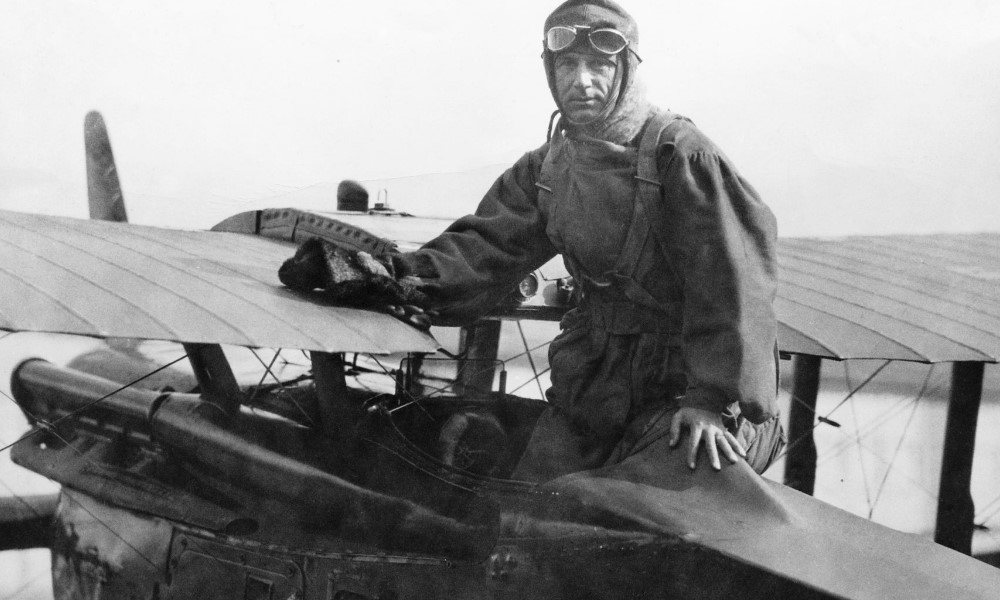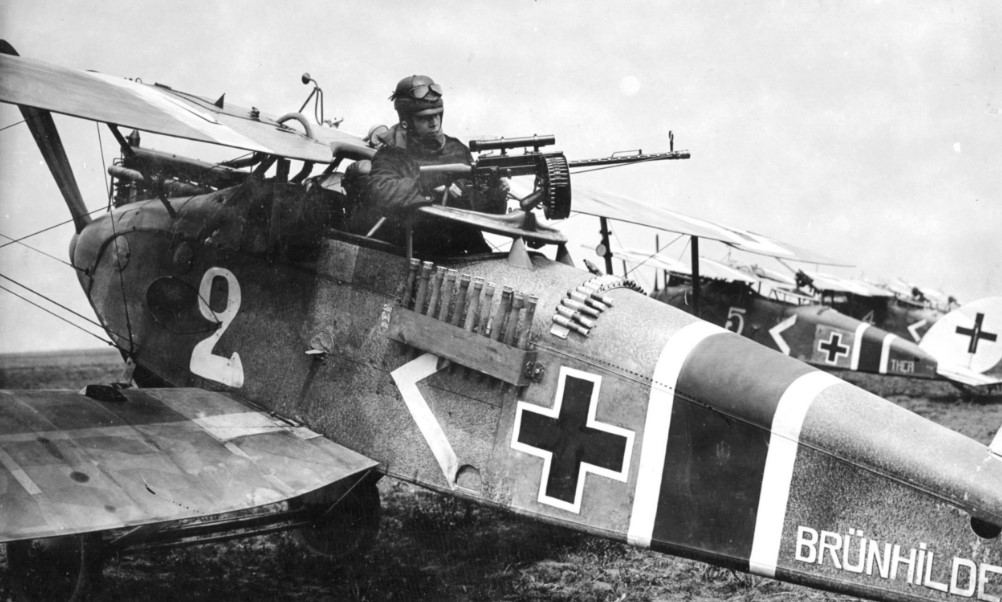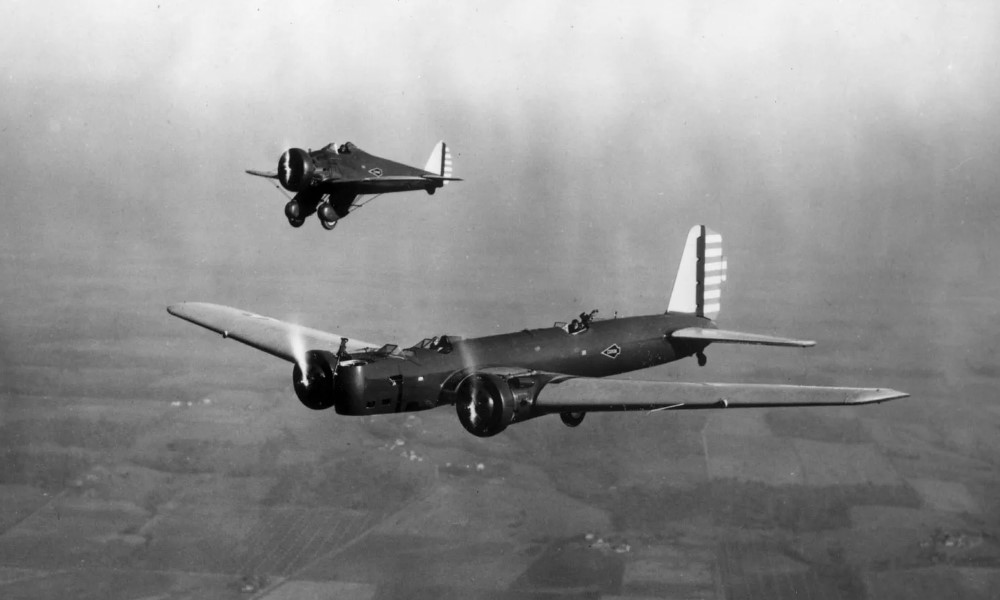Aerial warfare in World War 1 marked a significant turning point in military history. Before the First World War, combat was primarily confined to the ground and seas. However, with the advent of aircraft and the growing recognition of the sky as a new frontier for warfare, aviation began to play a critical role. The impact of aerial warfare during this period influenced not only the outcome of the war but also shaped the future of military strategy.
History of Aerial Warfare WW1

Aerial warfare during World War 1 marked the first large-scale use of aircraft in military conflict. At the start of the war in 1914, airplanes were primarily used for reconnaissance, allowing armies to gather vital intelligence on enemy positions. Initially, these planes were unarmed and served only as observation tools.
However, as the war progressed, aircraft began to play a more active role in combat. By 1915, planes were equipped with machine guns and bombs, leading to the emergence of fighter planes and bombers. This new form of warfare introduced dogfights, where pilots engaged in close-range combat in the skies. The development of the synchronization gear allowed machine guns to fire through a plane’s propeller, revolutionizing air combat.
Notable pilots, such as Manfred von Richthofen (the “Red Baron”), became legendary figures, with air aces achieving high kill counts. Air superiority became a key factor in several major battles, influencing tactics on the ground.
By the end of the war in 1918, aerial warfare had evolved into a critical component of military strategy, setting the stage for the expanded role of air forces in future conflicts. WW1 solidified the airplane as a fundamental weapon of war.
The Evolution of Technology in Aerial Warfare During WW1

World War 1 (1914-1918) marked the dawn of aerial warfare, forever changing the face of combat. Initially, planes were used for reconnaissance, but as the war progressed, the aircraft became vital tools in offensive and defensive military strategies.
The rapid technological advancements during the war turned the skies into a new battlefield where innovation played a crucial role. The evolution of aerial warfare technology during WW1 laid the foundation for modern air combat and military aviation.
Early Use of Aircraft: Reconnaissance
At the start of World War 1, aircraft were relatively primitive and mainly used for reconnaissance missions. They allowed armies to gain a tactical advantage by observing enemy troop movements and gathering intelligence from the sky. This marked a significant improvement over previous methods, such as using hot air balloons.
Key Features of Early Reconnaissance Aircraft:
- Unarmed planes: Early aircraft were not equipped with weapons and served solely as observational tools.
- Basic instrumentation: These planes had limited navigation instruments, relying heavily on the pilot’s skill and knowledge of terrain.
- Low speeds and altitudes: Early aircraft flew at low speeds (around 60-70 mph) and altitudes, making them vulnerable to ground fire and other aircraft.
Reconnaissance quickly proved invaluable, prompting both sides to invest more heavily in aviation technology.
The Birth of Fighter Planes
As reconnaissance planes began to make a difference on the battlefield, the need arose to protect these aircraft from enemy fighters. This gave rise to the fighter plane, a small, fast aircraft designed for dogfighting and aerial combat.
The early fighter planes were typically biplanes, which featured two wings stacked one on top of the other. This design provided the necessary lift and maneuverability required for aerial combat. However, the key technological advancement that turned planes into effective weapons of war was the synchronized machine gun. Introduced in 1915, this technology allowed pilots to fire their guns through the spinning propeller without damaging the blades.
Key Features of Early Fighter Planes:
- Synchronized machine guns: These guns allowed pilots to shoot directly forward, improving their accuracy during dogfights.
- Enhanced maneuverability: Fighter planes were designed to be agile, with biplane wings providing extra lift for sharp turns and aerial maneuvers.
- Lightweight and fast: The best fighter planes of WW1, such as the Sopwith Camel and the Fokker Dr.I, were light, fast, and could climb to high altitudes quickly.
The emergence of fighter aces, such as Manfred von Richthofen (the Red Baron), further highlighted the critical role of aerial combat.
The Role of Bombers in Aerial Warfare
As the war continued, the role of aircraft expanded beyond reconnaissance and dogfighting. Bombing raids became an essential part of the war strategy, and specialized bombers were developed to carry out these missions.
The Gotha G.V, introduced by the Germans, was one of the most effective bombers of the war. It could carry a large payload of bombs and had a longer range, allowing it to strike targets far behind enemy lines. Bombers were used to destroy infrastructure, supply depots, and even cities, marking the first time civilian areas were targeted from the air.
Key Features of WW1 Bombers:
- Large payload capacity: Bombers like the Gotha G.V could carry several hundred pounds of explosives.
- Long-range capabilities: Bombers had the ability to fly long distances, reaching strategic targets far from the frontlines.
- Defensive armament: Bombers were equipped with machine guns to defend against attacking enemy fighters.
Observation Balloons and Anti-Aircraft Defenses
While planes dominated the skies, observation balloons were still used extensively for artillery spotting and reconnaissance. These balloons, which were tethered to the ground, allowed for continuous observation of the battlefield. However, they were vulnerable to attack by fighter planes.
In response to the increasing threat from the air, both sides developed anti-aircraft defenses. These included large-caliber guns designed to shoot down enemy planes, as well as the deployment of early anti-aircraft machine guns and artillery.
Key Features of Anti-Aircraft Technology:
- High-velocity guns: Anti-aircraft guns were designed to shoot explosive shells at aircraft at high altitudes.
- Artillery coordination: Observation balloons helped guide artillery fire against enemy aircraft and ground targets.
Top 5 Products for Exploring WW1 Aerial Warfare

For enthusiasts of history and aviation, there are several products that allow for a deeper exploration of WW1 aerial combat. These products include scale models of aircraft, flight simulation software, board games, and educational books. Each provides a unique way to engage with this important chapter of history.
1. Corgi WW1 Aircraft Models
The Corgi WW1 Aircraft Models offer meticulously detailed representations of famous aircraft from World War 1, such as the Sopwith Camel and the Fokker Dr.I. These die-cast models are perfect for collectors and history enthusiasts, capturing the iconic designs of planes that shaped aerial warfare during WW1.
- Features:
- Precision die-cast construction
- Authentic detailing that replicates real aircraft used during WW1
- Available in multiple scales for collectors
- Price: $50 – $150, depending on the scale and rarity of the model
- Use Case: Ideal for collectors of military memorabilia or anyone interested in owning a piece of WW1 aviation history. The models are also used for educational purposes, helping to visualize the technological advancements of the time.
- Advantages: High-quality craftsmanship, highly detailed
- Disadvantages: Higher price points for rare models
You can purchase these models from Corgi’s official website.
2. Aces High: WW1 Air Combat Board Game
For those who want to engage with the strategy of WW1 air combat in a more interactive way, the Aces High: WW1 Air Combat Board Game provides a tactical experience. Players can control different aircraft, engage in dogfights, and recreate historical battles.
- Features:
- Historical accuracy in aircraft and combat tactics
- Multiplayer gameplay with a strategic focus
- Customizable scenarios based on real WW1 battles
- Price: $40 – $60
- Use Case: This board game is perfect for history buffs, families, or educators looking for an engaging way to learn about WW1 aviation through a hands-on, interactive approach.
- Advantages: Fun and educational, encourages strategic thinking
- Disadvantages: Requires multiple players, setup can be time-consuming
You can find this game on Amazon.
3. WW1 Flight Simulator Software
For those looking for an immersive experience, WW1 Flight Simulator Software allows users to step into the cockpit of a World War 1 fighter plane. With detailed flight physics, realistic controls, and historically accurate planes, these simulators offer an exciting way to experience dogfights and aerial missions from the safety of your home.
- Features:
- Realistic flight dynamics and physics
- A wide range of WW1-era aircraft to choose from
- Multiplayer options for dogfights and mission-based gameplay
- Price: $30 – $80
- Use Case: Ideal for gamers and aviation enthusiasts who want to experience the thrill of flying WW1 planes, learning about the challenges pilots faced, and participating in historical missions.
- Advantages: Immersive, detailed gameplay
- Disadvantages: High system requirements, steep learning curve for beginners
You can purchase the software on platforms like Steam.
4. The Red Baron: A WW1 Biography Book
For those interested in the human stories behind aerial warfare, The Red Baron: A WW1 Biography is an excellent resource. This book delves into the life of Manfred von Richthofen, one of the most famous fighter pilots of WW1, who became a symbol of the deadly dogfights that took place in the skies.
- Features:
- A detailed account of the life and career of the Red Baron
- Insight into air combat tactics used during WW1
- Analysis of how Richthofen became a legendary figure in military history
- Price: $15 – $25
- Use Case: This book is ideal for history enthusiasts, students, or anyone who wants to learn more about the personal side of aerial combat during WW1.
- Advantages: In-depth, well-researched content
- Disadvantages: Focused primarily on one pilot’s story
You can purchase the book from Barnes & Noble.
5. WW1 Aviation Poster Collection
For those who appreciate the visual history of aerial combat, the WW1 Aviation Poster Collection offers beautifully designed posters featuring famous aircraft, pilots, and battles from the war. These posters are perfect for decorating homes, offices, or classrooms.
- Features:
- High-quality prints of vintage WW1 aviation artwork
- Available in multiple sizes
- Historical accuracy in design and detail
- Price: $20 – $50
- Use Case: Ideal for collectors or anyone looking to add a historical touch to their decor. The posters also make great gifts for aviation enthusiasts.
- Advantages: Beautifully designed, historically accurate
- Disadvantages: Primarily decorative, limited educational use
You can find these posters on Etsy.
Product Comparison Table
| Product | Features | Price | Use Case | Advantages | Disadvantages |
|---|---|---|---|---|---|
| Corgi WW1 Aircraft Models | Precision die-cast models, historical detail | $50 – $150 | Collectors, history enthusiasts | High-quality craftsmanship, historical accuracy | Expensive for rare models |
| Aces High: WW1 Air Combat Board Game | Multiplayer gameplay, customizable scenarios | $40 – $60 | Families, history buffs | Fun and interactive, encourages strategy | Requires multiple players |
| WW1 Flight Simulator Software | Realistic flight physics, multiplayer mode | $30 – $80 | Gamers, aviation enthusiasts | Immersive, historically accurate | High system requirements |
| The Red Baron: WW1 Biography Book | Detailed historical biography | $15 – $25 | History enthusiasts, students | In-depth and well-researched | Focuses on a single figure |
| WW1 Aviation Poster Collection | High-quality prints, historical artwork | $20 – $50 | Collectors, home decor | Beautiful design, perfect for display | Limited use beyond decoration |
Where to Buy These Products
These products are available for purchase on several popular online platforms. Depending on what you are looking for, you can visit the following websites:
- Corgi WW1 Aircraft Models: Available on the official Corgi website
- Aces High: WW1 Air Combat Board Game: Available on Amazon
- WW1 Flight Simulator Software: Available on Steam
- The Red Baron: A WW1 Biography: Available on Barnes & Noble
- WW1 Aviation Poster Collection: Available on Etsy
FAQs
1. Are Corgi aircraft models suitable for children?
While the models are well-crafted and durable, they are primarily designed for collectors. Small parts may not be suitable for younger children.
2. What is the recommended age for the Aces High board game?
The game is recommended for ages 12 and above, as it involves strategy and historical knowledge.
3. Can I use the flight simulator on Mac?
Many WW1 flight simulators are available on both Windows and Mac platforms, but be sure to check the system requirements for each product.
4. Is the Red Baron biography historically accurate?
Yes, the book is based on detailed research and provides an accurate account of the life and career of Manfred von Richthofen.
5. Are the aviation posters suitable for framing?
Yes, the posters are printed on high-quality paper and are ideal for framing and display.